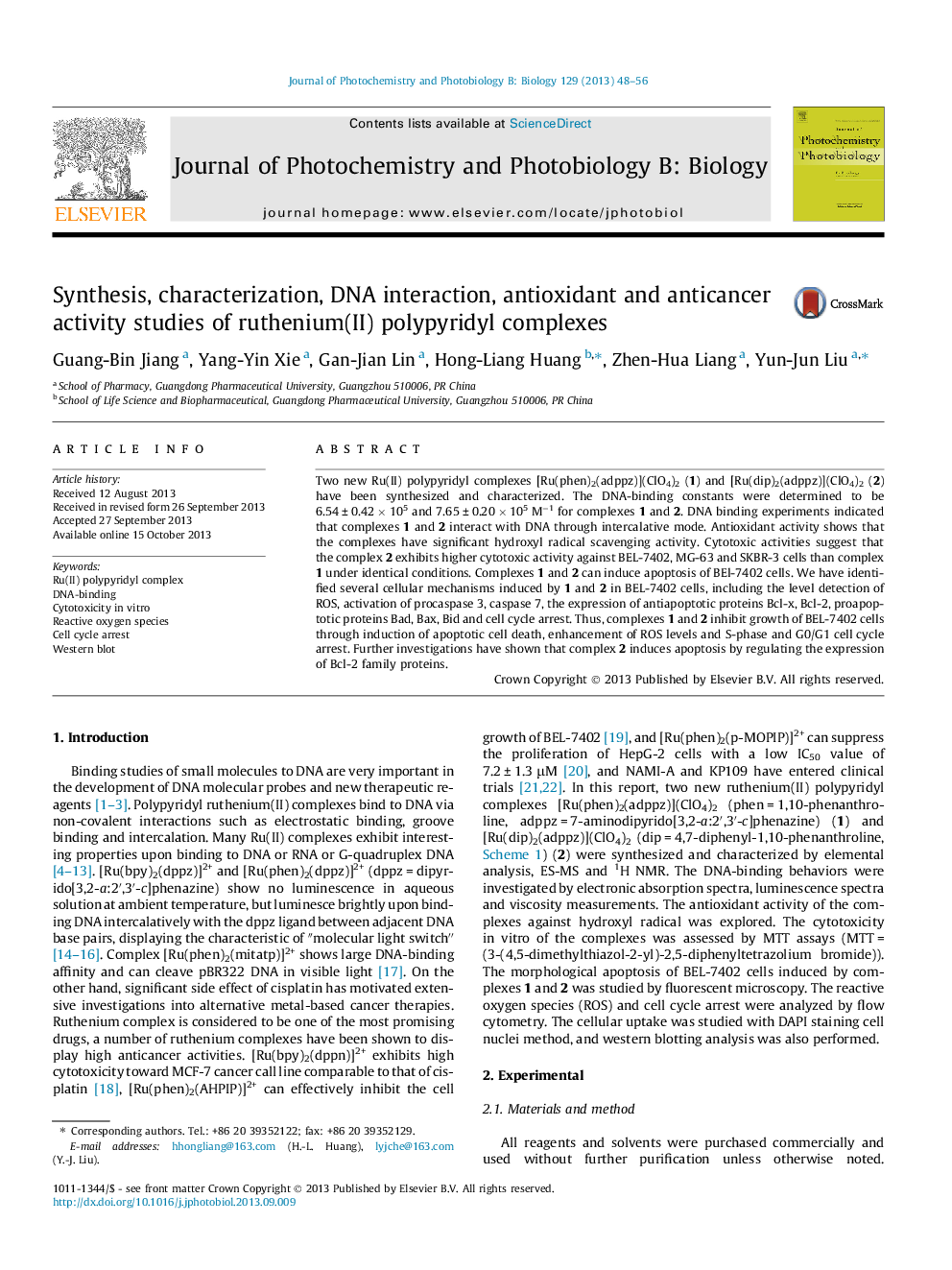| Article ID | Journal | Published Year | Pages | File Type |
|---|---|---|---|---|
| 30183 | Journal of Photochemistry and Photobiology B: Biology | 2013 | 9 Pages |
•Two new ruthenium (II) complexes [Ru(phen)2(adppz)](ClO4)2 and [Ru(dip)2(adppz)](ClO4)2 were synthesized.•The DNA-binding behaviors were studies by absorption titration, luminescence spectra and viscosity measurements.•The cytotoxicity of these complexes was assayed by MTT method.•The apoptosis was investigated by AO/EB, Hoechst 33258 staining method and flow cytometry.•The cellular uptake, ROS, cell cycle arrest and western blotting analysis were investigated.
Two new Ru(II) polypyridyl complexes [Ru(phen)2(adppz)](ClO4)2 (1) and [Ru(dip)2(adppz)](ClO4)2 (2) have been synthesized and characterized. The DNA-binding constants were determined to be 6.54 ± 0.42 × 105 and 7.65 ± 0.20 × 105 M−1 for complexes 1 and 2. DNA binding experiments indicated that complexes 1 and 2 interact with DNA through intercalative mode. Antioxidant activity shows that the complexes have significant hydroxyl radical scavenging activity. Cytotoxic activities suggest that the complex 2 exhibits higher cytotoxic activity against BEL-7402, MG-63 and SKBR-3 cells than complex 1 under identical conditions. Complexes 1 and 2 can induce apoptosis of BEl-7402 cells. We have identified several cellular mechanisms induced by 1 and 2 in BEL-7402 cells, including the level detection of ROS, activation of procaspase 3, caspase 7, the expression of antiapoptotic proteins Bcl-x, Bcl-2, proapoptotic proteins Bad, Bax, Bid and cell cycle arrest. Thus, complexes 1 and 2 inhibit growth of BEL-7402 cells through induction of apoptotic cell death, enhancement of ROS levels and S-phase and G0/G1 cell cycle arrest. Further investigations have shown that complex 2 induces apoptosis by regulating the expression of Bcl-2 family proteins.
Graphical abstractTwo new Ru(II) complexes [Ru(phen)2(adppz)](ClO4)2 (1) and [Ru(dip)2(adppz)](ClO4)2 (2) were synthesized. The DNA-binding behaviors were investigated. The cytotoxicity was assessed by MTT method. The apoptosis, cellular uptake, ROS, cell cycle arrest and western blotting analysis were also investigated.Figure optionsDownload full-size imageDownload as PowerPoint slide
